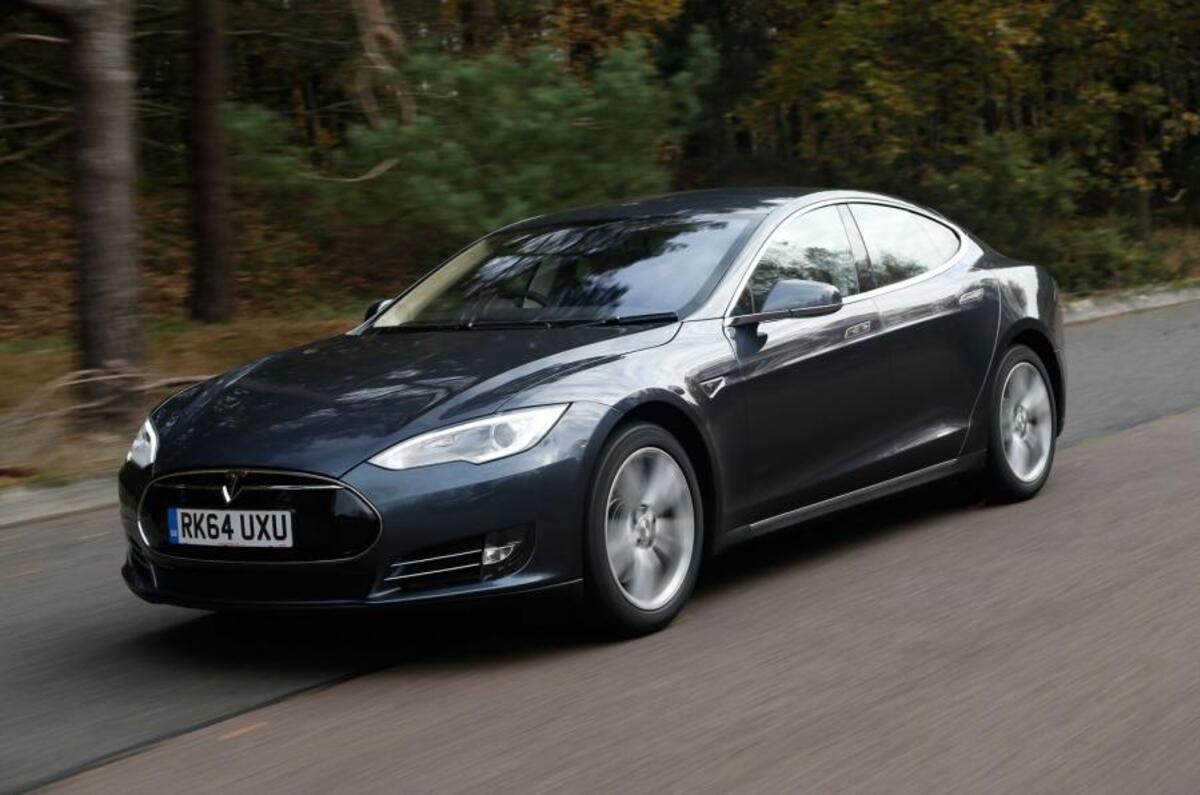Tesla is rolling out a new level of autonomous driving on many of its Model S vehicles, as part of the latest update to version 7.0 of the car’s software.
The technology, which has been in testing for over a year in most markets where the Model S is sold, will be made available overnight to around 60,000 Model S cars built since last September and fitted with the ultrasonic sensors and forward-facing camera required for the system to work. Called Autopilot, it is designed primarily for motorway use, where it can switch between lanes without any direct steering input from the driver and react to traffic flow.
Tesla describes this generation of the software as “a public beta” and says that recognition of traffic lights and Stop signs will only come with the next update of the software. It is also recommending that customers keep their hands on the wheel.
The system uses four data sources - ultrasonic sensors right around the vehicle, a forward-facing camera that can read most road signs, forward radar that can see through fog, rain and snow, and what Tesla describes as “high-precision digital maps” that include pooled data on the number of lanes, curvature of the roads and even parking lots, all supplied by existing Model S usage.
The move was announced by Tesla boss Elon Musk at a press conference in the United States. He admitted that it was an early version of the technology, but said that Tesla’s connected network of vehicles would allow it to make rapid progress.
“We still think of this as a public beta,” he said, “so we want people to be quite careful with it at first. But it learns over time. The network of vehicles is constantly learning and as we release the software and more people enable Autopilot, the information about how to drive is uploaded to the network. Each driver is, in effect, an expert trainer in how the Autopilot should work. It’s a combination of a variety of systems and this can only really be done as a connected vehicle.”
Musk said that with its current levels of capability, the system would be best suited to well-marked roads and dense-traffic situations - but suggested that it could eventually gain enough autonomy to do away with conventional driving controls altogether. “It tends to work better in places where there are clear markings; it works best where the infrastructure is good,” he said.
“It’s a real boon in high-traffic situations. If you’re in slow-moving gridlock traffic, turn on Autopilot and it works really well - almost to the point where you can take your hands off the wheel. I won’t say to do that, but some people may.”
He stressed that owners will still be liable for any accidents that are caused by a Model S travelling with Autopilot, and added that users should “exercise caution at this early stage”. “It should not hit pedestrians, hopefully,” he said. “It does sense pedestrians; it can see them. It can also see cyclists, so it should brake before hitting them. It should handle them well. But the instructions say to pay attention to the surroundings and be ready to take the wheel at any time.”






Join the debate
Add your comment
Don't understand why people
Mentally Impaired !
Boris Johnston
Will drivers be up to the job?